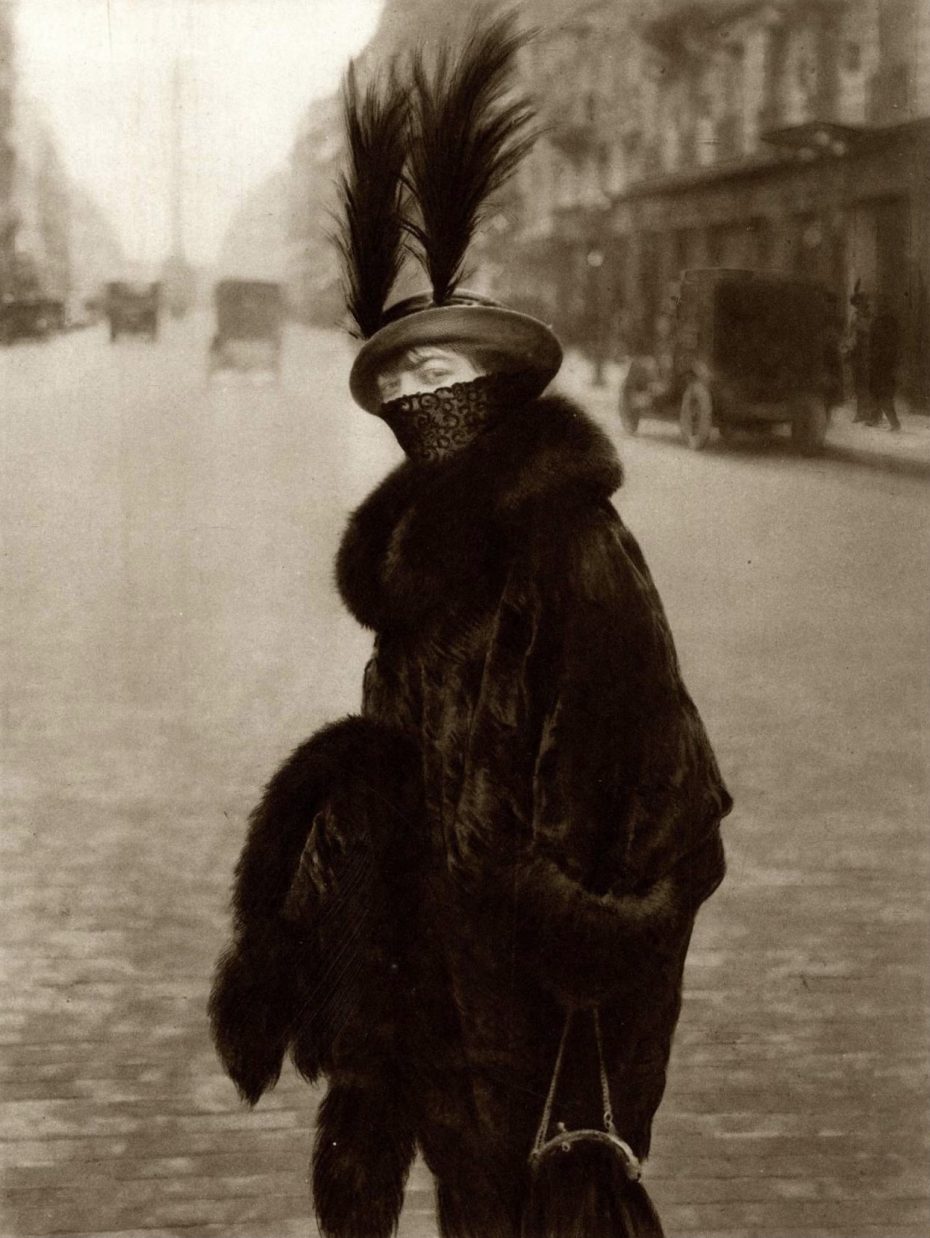
On this wintry morning of January 1914, Paris is rising, wrapped in the cotton-white coat it has donned overnight. Industry and its machinery have long been running as shop fronts light up and the streets slowly spring to life; the early morning people come alive to the cries of news announced by street boys.
Elegant bourgeois women, powdered and adorned in fashionable toiletries, ogle the displays in the shop windows of Place Vendôme. Young dandies curling their finely trimmed moustaches with a gloved hand, clattering the frozen pavement with their varnished canes, discuss the return of the Mona Lisa to the capital.
It is in this urban renaissance that a female figure emerges from the corner of Rue de la Paix, her shadowy figure escaping the morning fog. She is already turning heads as she gracefully slips between the passers-by. The heels of her little boots break the wadded atmosphere with every tap on her path.
“Who is that?” says a loudly whisperer. “Could it be the widow Bellecour?”
“No, you are mistaken. It is Madame de Courcel! But where is she going ? What a beauty!”
Amidst the murmurs, this esoteric creature walks quietly along, the reflection of her sumptuous winter finery appearing and disappearing on the windows of the shops as she passes, eclipsing, for a fragment of a second, the jewels on sale.
A sea breeze swells her thick fur, transforming the coat into a cape, and ruffles the long, shimmering feathers adorning her headdress; the mark of an avant-garde style of which the wearer seems to be the incarnation.
“Her hat is superb. And the veil, isn’t it original? That lilac!,” the whispers at the café terrace continue.
“It is said that her outfit was made especially for her by the modiste Caroline Reboux. Her establishment is at number 23, that must be it. But now she’s passing it. Where is she going?”
The figure suddenly accelerates slightly, skirting around a resting carriage to advance down the lane between the horses whose hooves echo between the walls of the street. The drape of the dark dress brushes the snow-covered pavement with the softness of a caress as the young woman hurries back to it. A train whistle can be heard in the distance, arriving at the Gare Saint-Lazare. The breath forms small clouds of steam in the icy air, which rise and mingle with the white smoke of the chimneys.
“I heard she writes and reads her productions during the salons she organises.”
“I’m told she publishes in La Fronde, the feminist gazette of the Durand.”
The Turkish veil contrasts with her diaphanous skin, the satin of which is irritated and forms a redness around the temples. But it is the eyes, the only visible part of the mysterious face, that stand out, immense and sea-green, in which an eternal youth seems to shine. They seem to contain a laugh. One imagines what is hidden. Perhaps a Mona Lisa smile.
The gossip rages on, curiosity is at its peak.
“A suffragette then? What does her husband say?”
“Oh nothing, she has none. If you want to know everything, she is probably running into the arms of one of her lovers, who are said to be numerous.”
A hand suddenly rises in the morning blue sky: a carriage halts, letting the young woman cross and fly down the track. Horses whinny. A flash. The elusive flâneur and photographer Eugène Atget raises the nose of his camera. The mysterious creature has evaporated, leaving behind only a trail of mist and a photograph. Time, which had been suspended until then, falls abruptly and life resumes its course on this January morning in 1914, in the Rue de la Paix.

